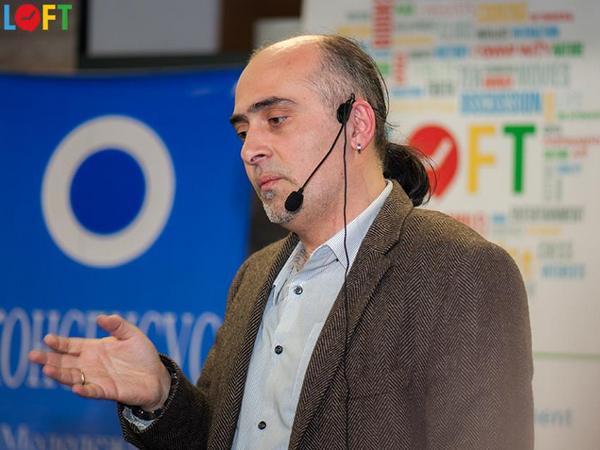 08.04.2016
08.04.2016MEDIA CONFRONTATION BETWEEN ARMENIAN AND AZERBAIJANI FORCES
Samvel Martirosyan, information security expert
From the very first day of its occurrence, the confrontation in Karabakh included an information component. Both sides resorted to different methods of propaganda. At first it had been done spontaneously, at the instincts’ level. Later, after the war, in the Internet development period, all that turned into development of partisan groups of cyber-activists, waging noble wars within the boundlessness of forums.
What the development of technologies and strengthening of the state's role have resulted in is that now both parties have the developed structures related to information security, propaganda and counter-propaganda; different approaches to the information wars have been outlined within the recent two-three years.
Azerbaijan has gone the length of building the vertical power structure; the partisan groups have gradually abandoned the arena and the media channels in the country have become almost fully controlled. As a result, a clearly controlled and rapidly acting model has been built, that has been more soviet structure-oriented. Meanwhile Armenia has started building a hybrid model that suggests integration of public and free groups into a uniform network, acting in a distributed manner.
The beginning of the hostilities has showed how both models work. Azerbaijani vertical ruling gave the first misfire right in the very beginning. Azerbaijani troops’ operation, that implied a blitzkrieg and sharp break-in of troops deep into the Karabakh defence overnight on April 2, has failed. According to the Karabakh authorities, by the morning, the Armenian military already pushed forward on the counter-attack, bringing serious losses to the enemy’s manpower and military hardware.
There was a sharp deceleration in the information sphere - Azeri press did not report anything before noon, and that was amidst numerous reports on the outbreak of hostilities throughout the media field. Apparently, those were the clear vertical relations that prevented the press from somehow covering the situation, whereas the military did not know how to describe what went wrong in the initial plans.
However, by the end of the day, the two sides entered the mainstream and a real information war on all fronts was unfolded. In fact, both sides are using all available information means. There are cyber-attacks on both sides. Armenian and Azerbaijani news and official websites are under the constant pressure because of DDoS attacks (the Turkish hacker group has been assisting the Azerbaijani side in this regard).
Propaganda materials have been flung in via the print media. Let’s take, for instance, the publication of alleged letter of the NKR Defence Minister to his Armenian colleague, allegedly intercepted by the intelligence. The letter was written with terrible, childish mistakes. But it may quite come in handy for internal use.
Perhaps the most active war is underway in the social networks, since nearly each and every has been engaged here. Here everyone can find an application field to the best of their abilities and spare time. The most cunning (and probably even working for the security services) are trying to ease into the users’ confidence under the Armenian names and find out about the situation on the frontline, in Yerevan, Stepanakert: is there any panic, where are the troops dispatched, etc. or sow panic, referring to their acquaintances up the line, who have seen with their own eyes, that the game is up.
Others argue in the comments below the articles. Some spread the articles themselves - pass them to their friends in other countries. But the most widespread mass are those who swear. They swear as much as they can, in any language they know, and even if they don’t know, they translate it using Google and swear anyway.
The use of information methods of struggle in all areas has been an accompanying component of the Karabakh conflict in the recent years. However, the recent military actions have brought the confrontation onto a new level, turning it into a real information war, that has a serious impact on the developments at the front as well. Involvement of both communities in the information confrontation on such a scale is really something new. And it will yield its fruit in the future as well.
Politicians will have to take into account the fact that they have virtually dragged all their communities into an active information confrontation. As for ordinary people, it is more difficult to send them back after the stand-down like soldiers to the barracks.
Published 06.04.2016
http://jam-news.net/Publication/Get/en-US/1632
Return
Another materials of author
- SAMVEL MARTIROSYAN: WHY AZERBAIJANI MEDIA STAYED SILENT[06.04.2016]
- SOCIAL MEDIA IN ARMENIA (2015 data)[10.07.2015]
- TELECOMMUNICATIONS INDUSTRY OF ARMENIA IN 2014 [15.05.2015]
- POTENTIAL MODELS OF INTERNET GOVERNANCE AND ARMENIA’S APPROACHES[27.04.2015]
- PROPOSALS REGARDING CYBERSECURITY OF ARMENIA[30.10.2014]
- DDOS ATTACKS ON ARMENIA CAUSE CONCERNS[12.05.2014]
- HACKER ACTIVITY BETWEEN ARMENIA AND AZERBAIJAN [03.03.2014]
- SNOWDEN’S DISCLOSURE: WORLD UNDER THE AMERICAN AND BRITISH SURVEILLANCE[03.12.2013]
- PENETRATION OF INTERNET INTO THE SOUTH CAUCASUS[04.10.2013]
- DATA PROTECTION ISSUES IN ARMENIA[25.03.2013]


